Secrets of proper cultivation of persimmons at home
Persimmon or Diospyros is a deciduous tree whose natural habitat is the subtropics. Persimmon began its spread throughout the world from China and Japan. There is a huge species diversity of this culture. Fruits of some species are eaten, while others are not. Quite often you can hear that persimmons are called wild dates, date plums or heart berries. And the discoverers, who assigned the tree a Latin name, called it the food of the gods - Diospyros.
The most commonly cultivated persimmons are Caucasian (Diospyros Lotus), eastern (Diospyros Kaki) and the most winter-hardy virgin (Diospyros Virginia). And thanks to the efforts of breeders, more than five hundred varieties have already been bred.
Content:
- The best varieties of persimmons for growing at home
- Rules for growing persimmon from stone
- Proper care of seedlings
- Secrets of caring for an adult plant
- Fruiting and grafting of persimmons
- Disease and pest control
- Useful properties of persimmon
The best varieties of persimmons for growing at home
In a natural environment, a persimmon tree is capable of reaching twelve meters in height and bearing fruits weighing up to half a kilogram. Nevertheless, today it is possible to cultivate persimmons at home, forming the crown of the tree in time and providing optimal conditions for keeping.
For potting conditions, it is better to choose varieties that are capable of self-pollinating and setting fruit. And what is interesting, they will not be inferior in the concentration of nutrients and vitamins to fruits grown in the open field.
For growing indoors, the most suitable varieties are:
- Jiro (Djiro), or Excellent, or Delisches. This persimmon variety belongs to the intermediate group, which forms both female and male flowers, but with an interval of 1-2 years. That is, such a persimmon will not bear fruit every year. The taste of the fruit is sweet. Even unripe berries can be eaten. On rounded, slightly flattened fruits, there are grooves that divide the berry into quarters from the stalk to the nose.
- Zenjy Maru. Due to the color of the pulp, the people got the name Shokoladnitsa. Able to bear fruit without pollination, thanks to the ovaries of flowers of both sexes. The pulp is orange-brown in color and has a honey taste. Young trees are able to please with a harvest for 4-5 years of life. It is believed that the more seeds a fruit has, the better its taste. This is a thermophilic variety, so it is not recommended to plant it outdoors if the temperature can drop below 15 degrees.
- Ukrainian. The tree grows up to four meters. Fruits are elliptical with a pointed tip reaching one hundred grams. A ripe persimmon of a rich orange color, sometimes with a red tint. The pulp is brownish, sweet and juicy. Refers to early maturing. Harvesting begins in early autumn. The fruits are suitable for conservation and drying. The tree does not need pollinators.
- Meader. Mid-early ripening periods allow harvesting as early as October.The berries are medium in size, weighing 70 g, have a round, slightly flattened shape. A distinctive feature of the taste is the presence of rum flavor and low astringency. Pollinators are not needed for fruit formation. The frost resistance of the variety is impressive - it can withstand temperatures down to 30 degrees. Suitable for transplanting a grown tree into the open ground of a garden.
- Khachia, it is called the Bull's Heart or Budenovka. Late variety. The fruits have a very tart taste that disappears after drying or freezing. The berries are round in shape with a pointed tangerine nose with a black speck on the top. Khachia does not need pollinators, its frost resistance is rather weak - it can withstand frosts up to 13-14 degrees.
- Kostata. Super late grade. Forms faceted oval orange fruits and dense structure, reaching a weight of 60 to 130 grams. The berries are sweet with astringency. The frost resistance of the variety is quite high - it is not afraid of frost at 22 degrees. Persimmons can self-pollinate, however, they will not set fruits every year.
Rules for growing persimmon from stone
To grow a full-fledged persimmon tree and wait for its fruiting, you need to create the right growing conditions. It is necessary to adhere to the correct temperature and humidity throughout the year. Winter is especially important when the tree leaves for a dormant period.
To grow a persimmon from a stone, it is necessary to properly prepare the planting material.
The first thing to do is choose the right bones. They should only come from well-ripe fruits, preferably from a few. The seeds extracted from the pulp must be washed and prepared in stages for planting:
- to prevent the development of pathogenic bacteria, persimmon seeds should be soaked for a day in a manganese solution of weak concentration. Seedsthat have floated up must be removed - they will not germinate
- disinfected and dried bones are recommended to be wrapped in a piece of cloth dipped in a growth stimulator. This can be a ready-made purchased biological product, or you can use freshly squeezed juice aloe... The seeds wrapped in cloth are placed in polyethylene and placed in the refrigerator for 5-7 weeks. In this case, it is necessary that the fabric does not dry out.
- after stimulation, the seeds are dried and, using sandpaper or a fine file, they carefully clean the dense shell of the seeds. This technique will facilitate and speed up germination.
After all stages of preparation, the seeds can be sown in the prepared soil. For planting seeds, a light and fertile substrate is suitable, which is well permeable to air and moisture. A mixture of garden soil, peat and sand would be ideal. Planting containers should be medium in size. At the bottom of each, it is necessary to lay a drainage of expanded clay or fine gravel 3-4 cm thick. Pour in the prepared soil mixture. The seeds must be buried in moist soil to a depth of 1-2 cm. After the performed manipulations, the containers are placed in polyethylene and placed in a warm place until sprouts appear.
An important point at this stage is periodic airing and moistening of the soil. Drafts and temperature drop below 23 degrees should not be allowed. If all the rules are followed, the sprouts of the future tree will hatch within 1-6 weeks.
Proper care of seedlings
With the appearance of sprouts, the containers are removed from the shelter, and the containers themselves are placed in a well-lit place, but not in direct sunlight. At the tips of the sprouts, a shell from the mother's seed usually remains, which must be removed, carefully prying it with a needle.
However, if the shell does not give in, then it should be moistened and placed under a film for several hours. This helps to soften the seed, which makes it easy to remove the shell without injuring the young sprout.
At first, after germination, persimmon seedlings quickly go into growth and the health of the future tree largely depends on competent care.To grow a strong tree you need:
- Irrigate seedlings on time and regularly, preventing the soil from drying out.
- Intense diffused light. The location of the seedlings should be well lit. If there is not enough light, then it is worth installing lamps sunlight.
- The correct flowerpot. The planting tank should not be too spacious, otherwise there is a risk of soil acidification and root rot. A tight pot will squeeze root system, which can destroy the plant.
- Due to the intensive growth of seedlings, young persimmons are needed on time transplant... In the first year of life, you need to increase the volume of the pot 2-3 times. Until the age of three, the plant is transplanted twice a year, then annually. After 5-6 years, transplants can be performed every two years. When transplanting, the main rule should be observed - you should not dramatically increase the size of the container. Each time the pot is taken 3-4 cm larger than the previous one.
- Formation of the crown of the tree. In the natural environment, a persimmon tree can reach 12 meters in height, therefore, a plant should be formed to adapt to living conditions. Usually the crown is given a spherical compact shape. To achieve this, you need to start pinching all the shoots when the seedling reaches 30-40 cm in height. This procedure helps to limit growth and form a compact tree with a decorative crown.
Secrets of caring for an adult plant
For a comfortable existence of persimmons at home, you need to bring the conditions of its maintenance as close as possible to natural ones. To do this, you must observe the following rules.
- Specificity glaze... The root system of persimmons should always be in moist soil, this should be watered regularly. To retain moisture as much as possible, the soil should be mulched with sawdust or strained tea leaves. Persimmons should be watered with settled soft water, preferably melted or rainwater. If ordinary tap water is used, then it is softened with a bag of peat, which is placed in a container with irrigation water for 12 hours. To maintain air humidity at the desired level, the tree should be sprayed at least once every two days.
- Lighting and temperature requirement. When choosing a place for a home plant, you need to focus on the abundance of diffused light and the complete absence of drafts. In spring and summer, the tree can and should be taken out into the fresh air, but persimmons are taught to do this, gradually increasing the time spent outside. Otherwise, the tree may get sick and die.
- In winter, persimmon needs rest. For wintering, it is placed in a dark, cool room. In this case, the plant needs to be watered regularly and spray, and cover the soil with a layer sawdust three centimeters. It is also necessary to provide access to fresh air, avoiding drafts.
- Introduction fertilizers... You need to fertilize persimmons throughout the growing season, but during the dormant period, top dressing can give the opposite result. Until the plant bears fruit, it can be fed with universal complex fertilizers for non-flowering indoor plants. As soon as the persimmon throws out the first color, then fertilizing is carried out, alternately introducing nitrogen-containing fertilizers - during the growing season, phosphorus-containing fertilizers - during the flowering period and potash - after flowering, until the dormant period.
Fruiting and grafting of persimmons
Usually persimmons grown from seeds are able to give their first harvest in 5-7 years. However, there are a number of rules that help speed up this process:
- constantly slow down the growth of the tree by regularly shortening fast-growing shoots
- don't be too zealous with the introduction top dressing, otherwise it will provoke overly active growth
- to produce vaccination persimmons in the first year of her life, preferably on a fruiting varietal tree, which is quite difficult
- grow a tree in a small area so that the root system does not develop too much, otherwise an overdose of nutrients may occur, which will lead to stuntedness and soreness
- to speed up the appearance of flower buds, it is recommended to ring some branches (remove a strip of bark 0.2-0.8 cm wide around the circumference of the branch, such rings are covered with garden pitch), but do not touch the trunk
- organization of the correct wintering of the plant. It was at this time that the laying of the future harvest takes place in the tree.
Since persimmon is a deciduous culture, it needs to create the right wintering conditions so that the tree can calmly survive a dormant period. To do this, you need to consider:
- temperature, which should not be higher than 5-10 degrees Celsius
- the room should be well ventilated, lighting during this period does not matter
- you definitely need soil mulch
- watering is carried out in moderation, only to maintain soil moisture
- you can spray the plant once a week or less
- introduction fertilizers ceases
By the end of winter, the plant follows transplant into a large container and move to a bright and warm place, renew abundant watering and spraying. After adaptation, they gradually begin to make feeding.
Disease and pest control
When grown at home, persimmons are rarely affected by harmful insects. Sometimes a scabbard can attack it, which is easily neutralized with the help of special drugs.
Rarely enough, a persimmon tree can infect powdery mildew.
In this case, the leaves of the plant are deformed and blistered, after which they fall off. For the treatment of the plant, systemic fugnicidesspraying a tree. If necessary, repeat the procedure after two weeks. When keeping homemade persimmons outdoors or when grown in the garden, powdery mildew practically does not affect the plant.
Useful properties of persimmon
Due to the presence of vitamins and microelements in persimmon fruits, it helps to replenish the vitamin and mineral balance in the body, helps to heal scurvy and helps to produce red blood cells.
The antibacterial properties of persimmons can neutralize intestinal infections. It is also recommended to use it to remove excess fluid from the body, and to protect the kidneys, persimmon should be washed down with milk.
Persimmon also has a positive effect on the nervous system, calming and increasing efficiency.
However, persimmon is not recommended for use in atherosclerosis. Persimmons are part of many diets, because they are considered a dietary berry. It is added to salads, meat dishes, and is used in the preparation of desserts and drinks.
If desired, and following simple rules, persimmons can not only be grown at home, but also enjoy healthy fruits. It is only necessary to provide a worthy care and be patient. After some time, persimmon will fully reimburse all efforts.
More information can be found in the video:



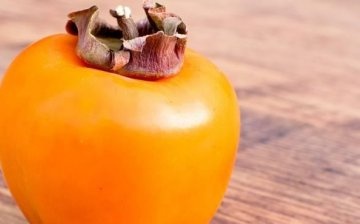

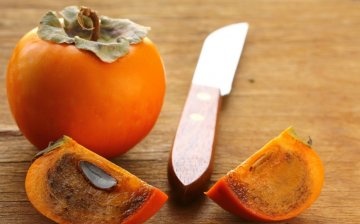
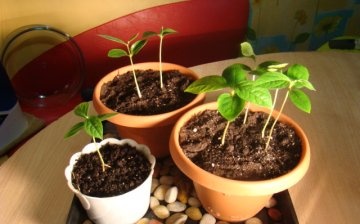
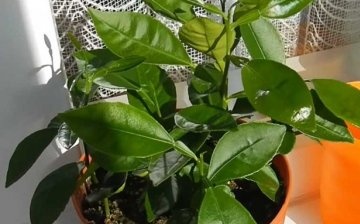
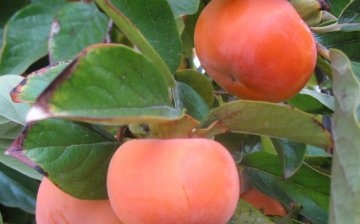
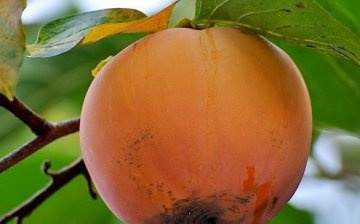
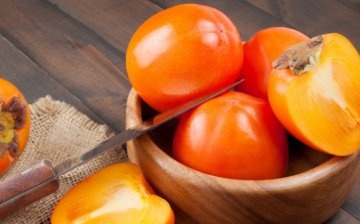








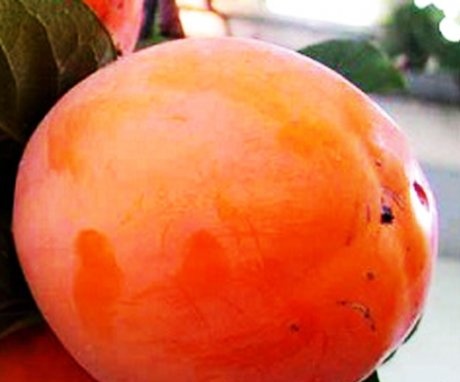
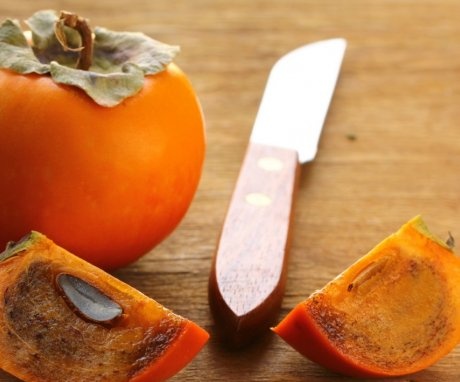

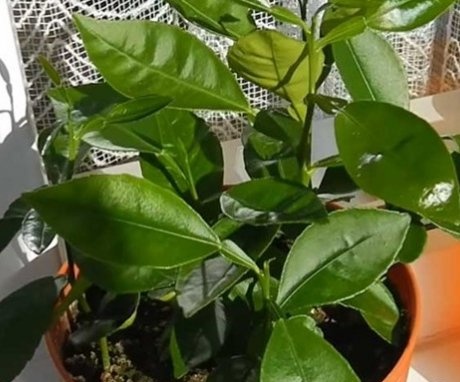
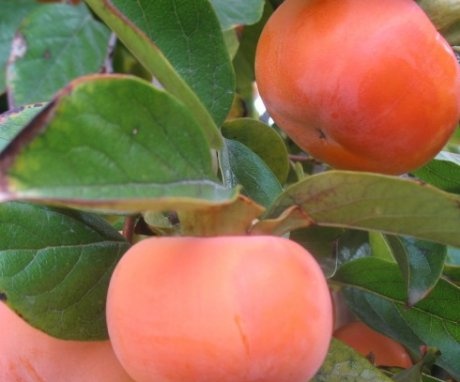


It seems to me that it is not entirely possible to grow a persimmon at home so that it has real and ripe fruits. Of course, I could be wrong, but the plant is completely adapted to other conditions.